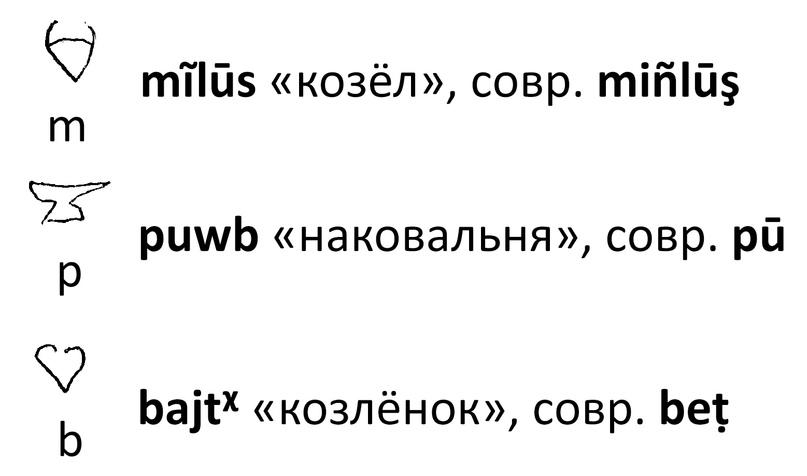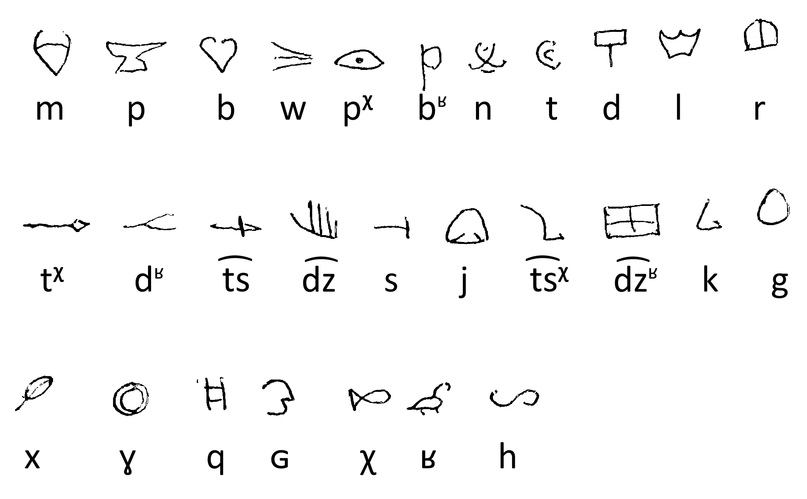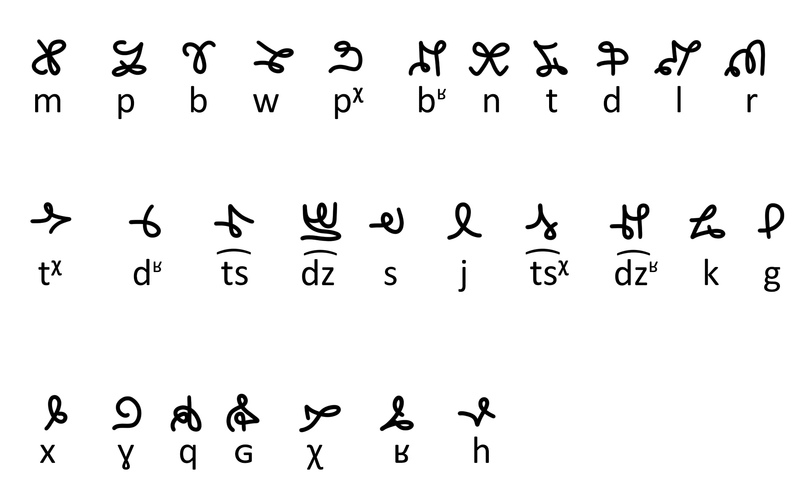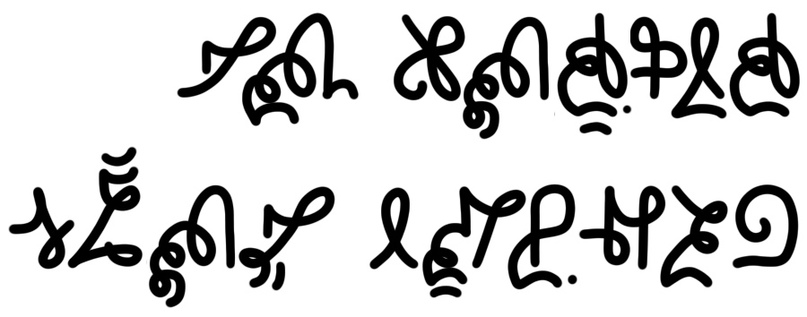What does the most common stereotype regarding doors look like? They are such stocky, stern guys, gloomy and stingy with words... and, accordingly, their writing should be the same, right?
It didn't work out quite well in the end. But let's talk about everything in order.
It all started, as often happens, with pictograms. Their earliest stage is found in rock paintings that date back to... there are terrible numbers there, but all this is obvious before 10,000 AD.
Each of these pictograms is a letter that corresponds to the first sound of the word that the pictogram represents. For example, here are three examples in the figure below:

It probably wasn’t particularly convenient to write this way, but somehow it was necessary. And yes, only consonants were written, without vowels, and from right to left. The full list of symbols is below:

Then some time passed, and the local doors began to write not on the walls of the caves, but on clay and wax tablets. Therefore, the symbols have been somewhat simplified and become a little more angular:

At this stage, vowels are also not written down. Well, who needs them, right?
Now we skip a few stages, because it’s not too interesting, and move on to the one we have now. And which was already... Well, in 200 AD for sure.

By this stage, some of the sounds had merged, but even for letters that had gone out of circulation, modern versions of letters exist: some ancient texts continued to be written with them. And finally vowels appeared! But in, uh, a little strange way.
With the help of the sign ̯ and its mirror analogue ˘ (depending on where it is attached to the previous letter), both a, And e, And o. And with the help of ̹ and ͗ - simultaneously i and u. Why is that? It's hard to say, actually; there is evidence that in the first millennium BC two dialects were in use in Kharassukhum, and e in one corresponded exactly a in another (and vice versa). Perhaps it has something to do with it; Perhaps they just decided not to bother. And another symbol appeared a little later: a dot next to the icon with a vowel began to indicate its nasalization (pronunciation through the nose).
In short, this evolved writing ends up looking less like something stern and staid than something Tyvian. What to do, however.
And finally, a phrase. Not exactly modern, originally from the 5th century AD, but nonetheless. Romanitsa looks like this: qeyadqāñrum arrex ğ-weẓgeñlāy xūrukāṣ, “They say that a long time ago there lived a people in the middle of the world.” And in Kharassukhumi writing - below:

It turned out to be a bit much, but hopefully not too tiring. Thank you for reading!
